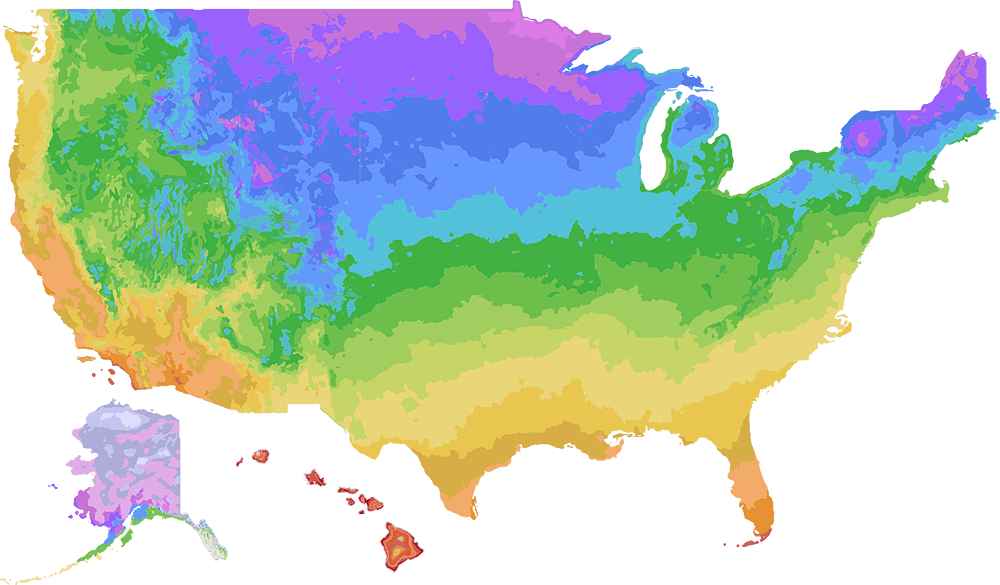Embracing Fragrance in the Garden
When we see beautiful flowers, our instinct propels us to pull them in closer for a sniff, even when we know they don’t have a fragrance. We love scented blooms not only for the perfume they exude but because of the nostalgic memories they can evoke. Bees enjoy them, too. Let’s take a closer look at how you can embrace fragrance to the fullest in your garden.
Nostalgic Scents Have you ever noticed how certain scents can immediately bring you back to a very specific place and time, as if you were right there again? Sometimes it’s a familiar scent with an obvious connection, but other times a scent can trigger a long-forgotten experience. When I stick my nose in a Luscious® Lantana flower, its fragrance is so familiar, yet hard to describe. Then, I remember the distinctive smell of the Mr. Sketch scented markers I adored as a child. Those lantanas smell just like them! I’m brought right back to the kitchen table where I used to sit and draw for hours.
I was a huge fan of grape Bubble Yum back then, too. It made the biggest bubbles and I had an eternal quest to blow bigger ones than my brother. Once, I blew a bubble so big it got caught in my eyebrows. Angelface® Angelonia smells just like that sugary sweet gum to me. Isn’t it amazing how the smell of flowers can bring back memories of things that happened so long ago? There is actually some science that links scent and nostalgia. It’s a phenomenon known as “odor-evoked autobiographical memory”, and it describes the relationship between odors and the part of your brain that stores long-term memories. That connection is the reason why specific scents can whisk you away to another time as if you were experiencing it all over again.
The distinctive scent of sweet alyssum lining the walkway up to our front door signified I had made it home safely. The heady fragrance of the wild lilacs that lined the road to our family’s cottage meant that summer vacation had officially begun. What scents from the garden bring you back in time?
Grow these nostalgic fragrant blossoms to create memories for those who pass through your garden: |
Bees Love Fragrant Flowers, Too! It’s not just humans who hold strong associations with fragrances. Scent plays a role in attracting bees, which is why you’ll find that many plants with light, fresh fragrances are pollinated by bees. When you add fragrant plants to your garden for you, you’re also doing a favor for pollinators.
Some fragrant plants that provide a nutritious pollen source for bees include: Rockin’® salvia, Lakota™ Fire coneflower, Pardon My bee balm, ‘Cat’s Meow’ catmint, Color Spires® salvia, Sugar Shack® buttonbush and Sugartina® ‘Crystalina’ summersweet.
Deer Prefer Plants Without a Scent You can use fragrance to your advantage if you garden where deer are an issue. Many, but not all, plants with fragrant foliage are often passed over by these creatures. They prefer a more bland, succulent palette than most fragrant plants provide.
That’s why they typically leave plants like abelia, sweetshrub, viburnum, Russian sage, perennial salvia and sweet bay alone in addition to most of the plants I’ve mentioned above. While it isn’t a fail-safe trick, you’ll find it will make a difference.
On the next beautiful, sunny day, take a walk around your garden or neighborhood and pay close attention to fragrance. Which scents spur your recollection of a favorite childhood memory or remind you of a loved one? Snap a quick photo or make a note of them, then look for them next time you’re at the nursery. Create new memories for those you share your garden with by filling it with the sweet perfume of fragrant flowers and plants. |
Patent Info: Luscious® Berry Blend™ Lantana camara USPP23919 Can4905; Snow Princess® Lobularia USPP21594 Can4189; Bluebird Nemesia fruticans USPP12014 Can1634; Festival Star™ Gypsophila paniculata USPP14818 Can2631; Sweet Romance® Lavandula angustifolia USPP23001 Can4906; Little Henry® Itea virginica USPP10988; 'Pardon My Lavender' Monarda didyma USPPAF Can5567; 'Cat's Meow' Nepeta faassenii USPP24472 Can5098; Sugar Shack® Cephalanthus occidentalis USPP26543 Can5124; Sugartina® 'Crystalina' Clethra alnifolia USPP21561 Can4160; Angelface® Blue Angelonia USPPAF CanPBRAF








